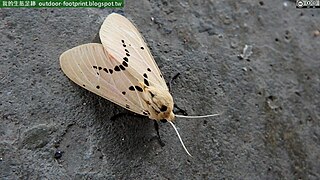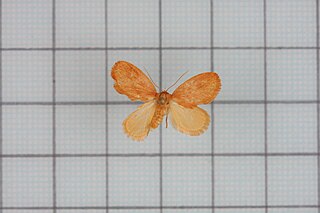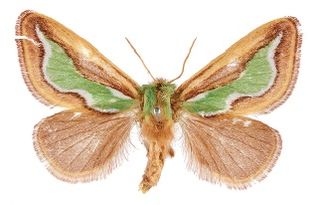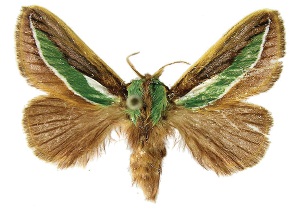
Cossoidea is the superfamily of moths that includes carpenter moths and relatives. Like their likely sister group Sesioidea they are internal feeders and have spiny pupae with moveable segments to allow them to extrude out of their exit holes in stems and trunks during emergence of the adult.

The Limacodidae or Eucleidae are a family of moths in the superfamily Zygaenoidea or the Cossoidea; the placement is in dispute. They are often called slug moths because their caterpillars bear a distinct resemblance to slugs. They are also called cup moths because of the shape of their cocoons.

Spilarctia is a genus of moths in the family Erebidae. The genus was erected by Arthur Gardiner Butler in 1875.
Godonela was a genus of moths in the family Geometridae. It is now considered a synonym of Semiothisa, though many of the species formerly placed here are now in Chiasmia

The Museum Witt Munich (MWM) is a department of the Bavarian State Collection of Zoology. It is located in Munich, Germany, and has the world's leading collection of moths.
Austrapoda is a genus of moths of the family Limacodidae.
Euphlyctinides is a genus of moths of the family Limacodidae.
Pseudonagoda is a genus of moths of the family Limacodidae.
Atosioides is a genus of moths of the family Limacodidae.

Pseudidonauton is a genus of moths of the family Limacodidae.
Pseudidonauton bhaga is a species of moth of the family Limacodidae. It is found on Borneo, Peninsular Malaysia and Sumatra.

Flavinarosa is a genus of moths of the family Limacodidae.
Monema is a genus of moths of the family Limacodidae.

Parasa viridiflamma is a moth of the family Limacodidae. It is found in Taiwan. The habitat consists of mid-elevation mountain areas.

Parasa pygmy is a moth of the family Limacodidae. It is found in Taiwan, inhabiting mountains, at altitudes ranging from 2,000 to 3,000 meters.

Parasa undulata is a moth of the family Limacodidae. It is found in China.

Parasa minwangi is a moth of the family Limacodidae. It is found in the Nanling Mountains of southern China. The habitat consists of mid-elevation mountain areas.

Parasa martini is a moth of the family Limacodidae. It is found in Taiwan. The habitat consists of mid-elevation mountain areas with primary vegetation.
Miresa argentifera is a moth of the family Limacodidae first described by Francis Walker in 1855. It is found in Sri Lanka.











